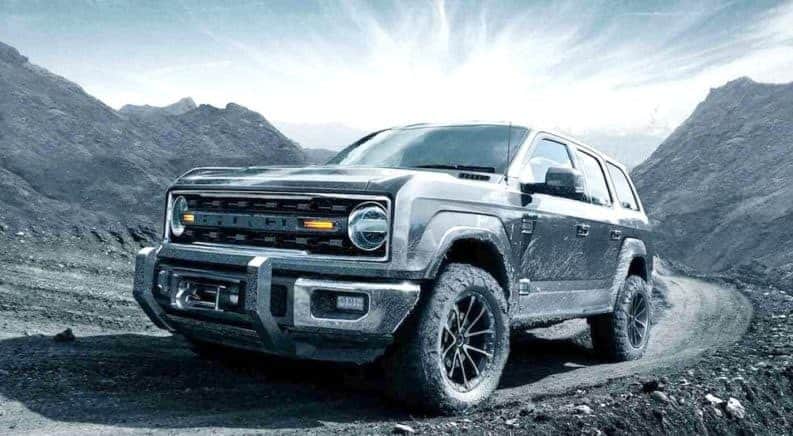Like many American car dealerships recently, Ford had lost market shares and had to face the music—the brand needed to make a change if it wanted to stay relevant in today’s market. Ford started those changes by hiring a new CEO, Jim Hackett, in May 2017. Since his hiring, Ford’s sales have continued to increase little by little, and now the automotive company is looking to make a big comeback. In April, Ford announced it would stop making all of its existing car models, except the Mustang and the Focus In their place, Ford offers a brand new lineup of vehicles that will shake things up and is bound to catch consumer attention.
Why the Change
The reason for this drastic change is to save money on vehicles that just aren’t selling, of course, but also because getting people to buy Ford is going to mean the company has to make some major changes. Right now, crossovers are all the rage, and the Ford Focus Active will be Ford’s answer to this trend. Ford will slash costs by discontinuing its older models that just aren’t selling well, and the company expects to save more than $25 billion by 2022. Ford expects an eight percent profit margin by 2020. So the short answer is—it makes financial sense.
What Ford Will Offer
Other than Mustangs and the Focus crossover, Ford projects that by 2020, the bulk of its stock will be in pickup trucks, SUVs, and commercial vehicles. The company has an all-new Focus line, including the Focus Vignale, the Focus ST-Line, and the Focus Active, which it unveiled in April. Additionally, Ford also introduced the 2019 Ranger pickup truck and the 2019 Edge ST SUV in January. That same month, the brand released plans to build the 2019 Mustang Bullitt. The most exciting reveal, though, was probably the promise of a 2020 Ford Bronco, which was teased in March. Next up, find out what consumers can expect from these exciting new additions to the Ford family.
The New Focus Models
In all of the new models, Ford has decided that a more “human-centric” approach is needed. From the exterior to the interior, every detail is designed to enhance the driver’s experience and keep them connected with the vehicle they are driving. The Focus Vignale is the more upscale version of the Ford Focus, featuring a lowered frame and designed to look like a sports car, with satin aluminum finishes and a signature grille mesh. The Focus ST-Line is designed for performance and looks sporty and sleek. The Focus Active is on a higher body frame and resembles a crossover, not a car. The vehicles come in 13 different colors and are equipped with Stop & Go Speed Sign Recognition, and Lane-Centering technologies, Active Park Assist 2 for fully automated parking with the push of a button, and FordPass Connect for staying connected on the go, including a wireless charging pad and SYNC 3 with eight-inch touchscreen.
The 2019 Ranger
The 2019 Ford Ranger will come in three models: the XL (the base model), XLT (mid-range model), and Lariat (fully loaded model). This truck is built tough and meant to be used in all terrains. In fact, it will come with Terrain Management System, allowing the driver to quickly select a mode (mud/ruts, grass/gravel/snow, sand, and normal) to keep the vehicle stable as they drive. The FordPass capability will allow passengers to use the vehicle as a Wi-Fi spot that can connect up to 10 devices at once. This all-terrain truck will be available in both FX2 and FX4 (two- and four-wheel drive) and SuperCab and SuperCrew, with seating for five people in all models. It may seem similar to the F-150, but the Ford Ranger is built more for outdoor enthusiasts and tough terrains rather than being optimized for everyday commercial use.
The 2019 Mustang Bullitt
Calling all Steve McQueen fans—the Bullitt is back! Ford’s special edition Mustang was made to honor the Steve McQueen movie Bullitt, and the car returns this summer to mark the 50th anniversary of the film. This is only the third time Ford has offered the special edition car (the other two times being the 2001 and 2009 models). The 2019 Ford Mustang Bullitt is designed after the Mustang GT Premium and will include Brembo six-piston front brakes, a 5.0-liter V-8 engine, and a larger radiator to keep that engine cool, and an intake manifold taken straight from the Shelby GT350. While it makes sense that this car is built for speed (it can reach 163 miles per hour), it is also built with the modern tech-savvy driver in mind and will have the option of an electronics package that features navigation and blind spot monitoring.
The 2020 Ford Bronco
Not much is known about what the 2020 Ford Bronco will bring to the market, but there has been a lot of speculation. One thing’s for sure: While the old Bronco was modeled on the F-150, the new style is being modeled on the Ford Ranger. We also know that the new Bronco is expected to be larger in size than the 1980s Bronco II. In addition, the new Ford Bronco is expected to compete with the Jeep Wrangler in what it can do off-road, and the Bronco will have a removable roof. Aside from those key facts, everything else is speculation at this point.
What Does This Change Mean For Ford—and Consumers?
The Model T Ford rolled off the line on October 1, 1908, and since then, Ford cars and trucks have become a symbol of both American innovation and freedom. Ford is an American staple, and when the brand faltered, it was a sad day for American business. With this new and gutsy enterprise, Ford is set to make a comeback, and Ford buyers are the ones who will win big. Ford is combining its reliable brand with new technology and adding in some models that car buyers are sure to want. Crossovers, larger SUVs, and trucks are not only a better investment for makers and buyers, but they’re what’s in demand right now. Not only that, by streamlining its offerings, Ford is thinking smarter—and greener. In January, it was announced that Ford will not only be making new models but new hybrid and electric cars too. The company is set to invest $11 billion over the next few years, and by 2022 it plans to have 40 hybrid and electric vehicles to add to its new model lineup. This means the company can bring innovation to vehicles, and consumers will have a reliable brand to look to when buying cars in the future.




